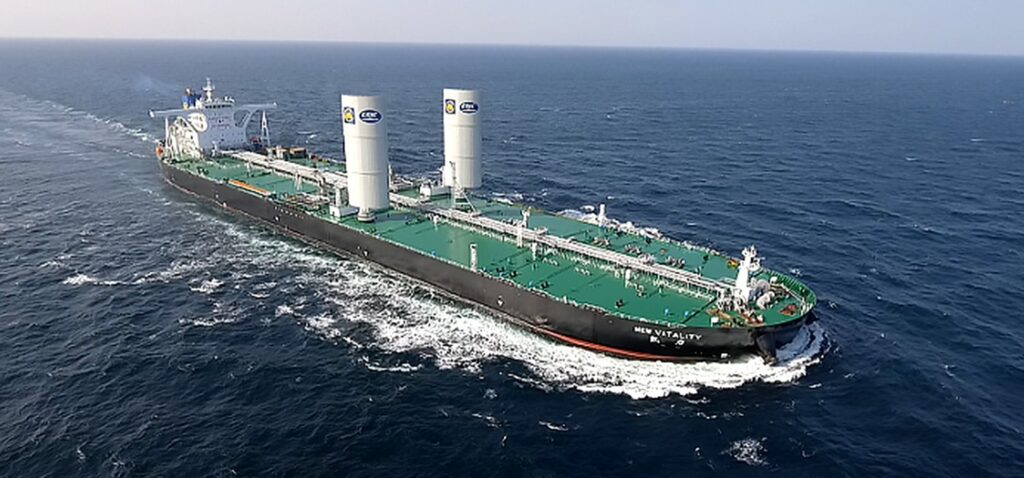The Egyptians developed the first advanced sailing cargo vessels around 5000 years ago and wind power continued to dominate until the late 19th century. In the 21st century wind assisted propulsion is making something of a comeback in commercial shipping. The pressures to decrease emissions and to cut costs have resulted in some companies exploring wind assisted propulsion for commercial ships. To date these solutions have included soft sails, rigid sails, rotors and parafoils. Depending on the technology employed and the route, wind assisted power is expected to deliver between 10 – 25% fuel and emissions savings. (Naaijen, P. and Koster, V., “Performance of auxiliary wind propulsion for merchant ships using a kite“, January 2007).
In 2008 the Heavy Lift Carrier MV Beluga SkySails completed a voyage from Bremerhaven, Germany to Guanta, Venezuela assisted by a 160 square meter kite, reporting a 20% reduction in fuel. A decade later in August 2018 two Norsepower Rotor Sails were installed onboard the product tanker Maersk Pelican . Over 12 months to September 2019 the aggregated total fuel saved was 8.2%.
Despite these successes there has not yet been a dramatic shift to wind assisted propulsion. This may be due to lengthy payback periods for some installations combined with the challenges and complexities posed with regard to seamanship and cargo operations. All solutions have some impact on deck space and can hinder cargo handling and therefore have limited application to geared operations or operations requiring free access to decks such as container ships. The point of traction also has a tendency to create an additional leaning moment which will affect handling and may contribute to problematic rolling. A safe method to deploy and recover is also essential for some solutions.
There are some signs that shipping is moving towards more widespread adoption, for example Kawasaki Kisen Kaisha, Ltd. (K Line) announced in June 2019 that they would install an automated kite based on parafoil technology supplied by AIRSEAS and were considering an order for up to 50 more. In 2018, China Shipbuilding Group’s Dalian Shipbuilding Industry Company and China Merchants launched and tested “New Vitality”, the world’s first VLCC equipped with sail propulsion technology. This was followed in November 2019 by an order for a new 307,000 DWT VLCC fitted with sail propulsion.

As wind assisted propulsion increasingly becomes adopted, there can be complex trade offs in terms of route optimisation. The useful power generated will be dependent on the operating/flight envelope, vessel course and speed and wind direction and speed, amongst other factors. Waves and currents can also be expected to interact with the wind and vessel hydrodynamics.
During the age of sail routes were determined by the prevailing wind and currents. Currently route optimisation often distils down to encountering less favourable conditions (higher resistance) over a shorter distance or more favourable conditions (less resistance) over a longer distance.
In order to support wind assisted propulsion companies such as FleetWeather are developing new hybrid approaches to ensure the optimum voyage outcome with the technology deployed.